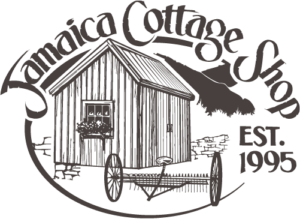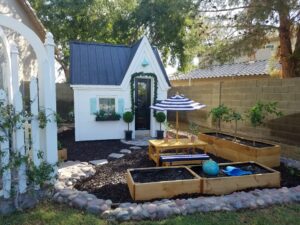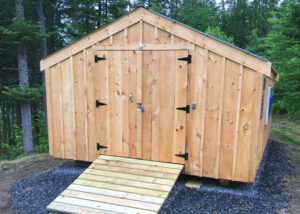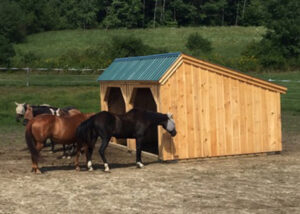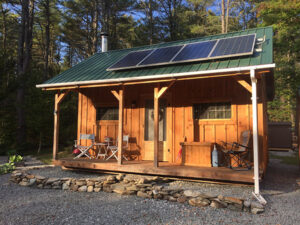
As a builder of tiny house kits for the best two decades, I have developed numerous questions which help me understand a potential client’s vision and budget. As I listen to individuals it is rare to hear the information I need as a builder. One such question is “How will your drinking water be supplied to the tiny house? I have received the answer more than once “from the faucet” I was told as a matter of fact, like I should have already known this.
I then proceed to go into a spew of conversation where I find myself giving the same information on off-grid housing options that I always do, and my mind drifts away thinking about building my next little getaway. I always have a personal project in the works, today is no exception. Heavenly Blue is the name I have chosen for this next project a gypsy wagon with giant 6×8 vaulted sky light open to the stars.
I have digressed, as my conversation continues, I then ask how your waste water will be distributed safely back into the environment. Again, the puzzled look from my prospective client and I receive an equally tenacious answer, “Well down the drain, silly.”
It is this mentality which I begin to write this blog post. Read on for real information about off-grid housing options that you can use to help understand what is most important for a small house environment. What makes it comfortable, if you have ever lived without hot running water then you already know.
Many folks tell me the following, I am going off grid I plan on having a compost toilet collecting my own rain water with a grey water system and will heat with wood. Although these tiny house off-grid water solutions are very possible, they are not the most economical; there are numerous pros and cons of each choice.
A shelter keeps you safe, warm and cozy from the elements, a roof is essential
What else is important to keep in mind? Before getting into the crazy beautiful aesthetics of the home develop a budget. No matter how big or small the home, many of the expenses can possibly be the same cost. Before you get into stairs vs. a ladder loft space, kitchen appliances and or storage closet space consider what is most important to you first.
A budget is imperative to a successful build.
I have personally built dozens of homes both for myself, as rentals and for others. It always begins with understanding what is most important to you. After providing an enclosed space protecting yourself from the environment, I suggest considering what will keep the space comfortable. HVAC or heating, ventilation, and air conditioning is very important and to do this affordably one should not skimp on the preparation of the shell, choosing a breathable membrane and high R value insulation will keep HVAC operating costs low. These systems that are most reliable commonly run on electricity, gas or a combination. Consider the location of the home it is more cost effective to be tied to the grid, if relying on gas the home should be accessible year-round to a delivery truck or tied into a municipality.
Clean drinking water is a prerequisite of survival.
You must choose a tiny house water solution that will provide at least one gallon per person per day. Running water into the house is ideal and is most commonly supplied by a drilled well on the property or a public municipality feeding water into a home. A septic system or sewerage disposal handles reintroducing the water safely back to the environment. A lot of these decisions will be based off the physical location the home. An urban landscape will require strict sanitation laws to be followed and a rural neighborhood allows for more opportunities to reintroduce the waste water back to the environment in a safe manner.
Moving your house is not required.
Societal norms are beginning to sway in the nomadic direction where moving your home is becoming more main stream. If the cottage will be used as a T.H.O.W. (Tiny House On Wheels) it is considered a travel trailer and must meet OTR (over the road) guidelines as a non-wide load. This helps to understand how the building will be used. As a travel trailer the building must meet criteria for travel, weight restrictions and balancing weight are to be considered. If the home is to be moved frequently then keeping the buildings within road restrictions is important. However, if the building will not be moved very often or over a far distance then a wide load often called park models is more common solution. The building can still be moved over the road with an oversize dimensional permit.
This answer will help reinforce best recommended solutions through the rest of the project. Consider the cost of the HVAC, plumbing and electrical. A larger home can be built for the same budget as a smaller one as the mechanical solutions cost the same. Lastly consider that travel trailers depreciate over time as traditional homes attached to a piece of property tends to appreciate. Looking at the house build as a long-term investment I always ask what will be done with the home when you no longer desire the shelter? The only reason I bring this up is that houses without a permanent foundation are very difficult to get a mortgage on.
So, if you plan on selling the home in the future the new buyer would need to pay cash of find an alternative funding as it may not qualify for a traditional home mortgage. The budget here is affected by understanding long term goals and comfort levels. Determining if the house will be added on in the future and or moved can help configure the design concerns today. Cost of a trailer starts at $5,000 US., never skimp on your foundation. If the home will only be moved once or twice in the life of the building a home on skids is potentially more affordable.
Financing for a tiny house often falls under personal loans
These loans are often time unsecured with higher costs. If the home is registered on wheels as a trailer, then the home builder may need to be RIVA certified. If financing is required, then insurance should be as well. Unless a home is attached to a piece of property or falls into a certified recreational vehicle it can be challenging to get insurance for such a home. The budget can be spread out with financing and help ease the upfront burden but may cost more in the long run.
Electrical power for your tiny house
A reliable off-grid solar array capable of running a tiny house with everyday common amenities is typically cost prohibitive. A reliable onsite solar, wind or hydropower system is not only very expensive initially (sometime costing more than the home) it is also coming with maintenance chores. For example, the batteries to run a reliable system cannot freeze. When choosing to keep a house comfortable temperature as well as running hot water consider the traditional methods of achieving these everyday comfort features that many of us have taken for granted growing up. The wise choice is not a one size fits all, best choice is only determined with the understanding of the rest of the answers. Tiny house power solutions become clear with honest understanding of how a space will be used.
Heating and Cooling is called HVAC
There are pros and cons with heating with firewood in a tiny house, with any T.H.O.W. build precious inches can be lost to fire code setbacks and expensive water solutions will freeze if a woodstove is not monitored around the clock. My recommendation is always the same be sure to have a thermostat back up heat source installed at time of the build, you will thank me that next time you stay out late when it is below zero. Electric or Gas sources are common place for thermostat heat in a tiny house. I prefer to lean towards one or the other based off the answers in this questionnaire it is pragmatic to choose to be connected to the grid or use gas. The solution for back up heat will also mirror the solution if hot water is desired. A budget is not always affected adversely here as the solution will picky back with hot water or primary heat source.
How will water be introduced to the cottage?
Will it be carried by hand, connected from a pressurized source such as a garden hose, or well, or will it be connected to a spring, stream or other body of water? This will help understand storage needs as well as other plumbing demands. The novelty quickly wares off carrying water into your home as it becomes a repetitive and mandatory chore for daily existence. Jugs must be kept clean and sanitary; storage space must be considered. Onsite drilled well starts at $5,000 US. as a basic up-front cost.
Drilling a well is a best choice if home remains stationary. Souring from a municipality incurs a monthly bill and you are at the mercy of the public treatment system for a clean water source. Rain collection is a source I hear commonly from potential clients and one I feel is the least reliable with concerns of storage, filtration and drought susceptible. This is the one answer here that will considerably drive the budget up for a small home. It is also the most perplexing for many individuals striving to be independent. Freedom is only attainable when daily human needs for survival are met.
The bucket system is a viable affordable solution.
For many a clean flushing toilet is a privilege, many in the world do not have access to. The solutions here will drive budget concerns. A flushing toilet must be tied into a waste line connected to a septic system. A compost toilet is often a choice people compromise with and there are several brands Jamaica Cottage Shop recommends including Nature’s Head and the dry flush Laveo toilet. An incinerating toilet, requiring strong electrical service and or gas.
A gray water disposal system, an onsite septic system or an RV style sewer hookup with collection tank are all very good solutions. No matter what once you use the water you will reintroduce it back into the environment in some way. If the water is simply grey water disposing of it into a garden may be possible, this depends on how many gallons per day a system like this will need to handle. Additionally, urban neighborhoods this almost never works as the ground must absorb the water as fast as it is produced, it cannot be reintroduced to the ground within 50 feet of any water source including a neighbor’s well. If your water will flow to you from a house or building most likely the water will be pressurized which can run the entire hours. The exception is that if the house is too far or uphill from the main structure producing the water the pressure may not be great enough for the needs of the house.
A pressure tank corrects this by storing pressurized water in the house until it is called for. Based off your answer of where the water is coming from different forms of water pressurizing is possible for a tiny house. This goes back to where the house will be planted, speak with the local municipality search online for the local building codes.
Seasonal vs. year-round living
Three season shells are very popular as many folks feel confident, they can finish the interior as time and money allow. Do consider this one piece of advice… A building interior cannot be insulated or finished until all the mechanicals are complete, electrical and plumbing should be done before any insulation or interior finish is considered. I personally will allow a client to source any items they choose. Many prefer this option as it tends to lessen the initial financial burden. As a builder I commonly say, “I will do as much or as little as you want”. The more I do the higher the cost. This answer helps understand the expectations as many of the solutions must be in place before cabinets can be installed.
Domenic is the Founder of Jamaica Cottage Shop, Inc. he has been building tiny houses since the nineties and currently lives with his partner Sarah in a two-hundred-year-old farm house in Jamaica, Vermont.

